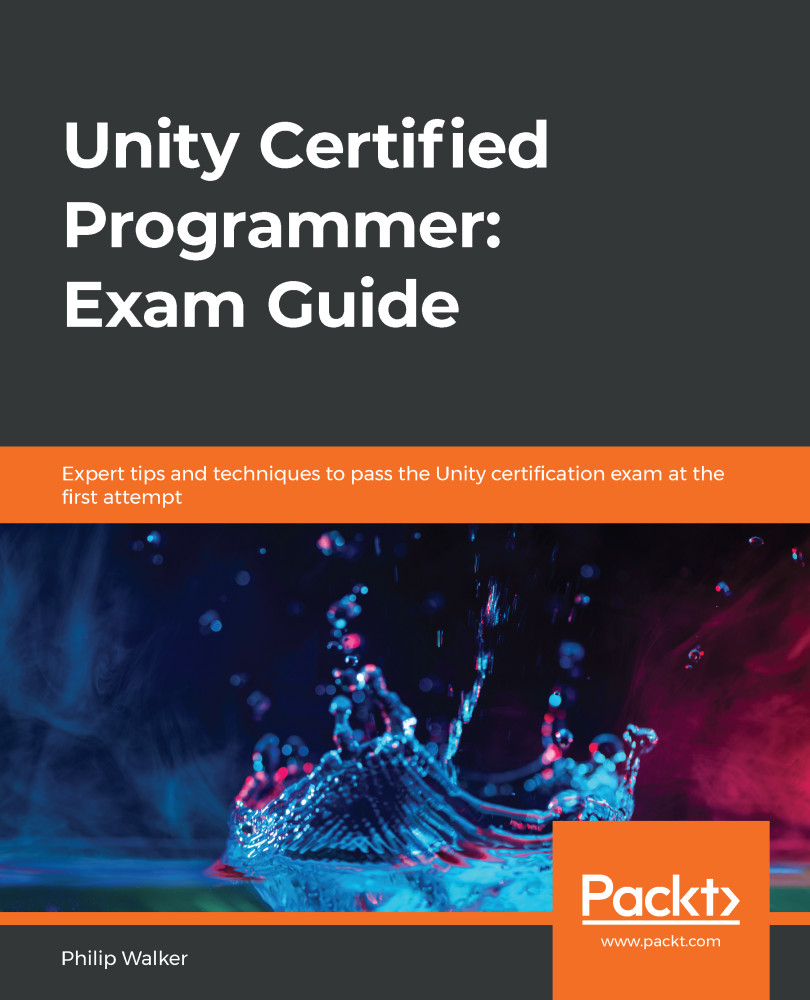In this chapter, we are going to add background music to our game. Then, we will make our music fade in when the level starts, fade out when the level is completed, and stop if the player dies. After that, we will be using all the UI skills we have learned so far to create a pause screen and add some slider components to it (which will be used in the next chapter for volume controls). With the pause screen built, we will make our game pause by freezing the player, the enemies on the screen, bullets, and moving textures. Also within the pause screen, we will be giving the player the option to resume play or quit so that the game goes back to the title screen with the use of Event Listeners, which we learned about in Chapter 9, Creating a 2D Shop Interface and In-Game HUD. Finally, we will be extending our mini mock test to 20 questions to cover what we have learned from this chapter...
-
Book Overview & Buying

-
Table Of Contents

Unity Certified Programmer: Exam Guide
By :

Unity Certified Programmer: Exam Guide
By:
Overview of this book
Unity Certified Programmer is a global certification program by Unity for anyone looking to become a professional Unity developer. The official Unity programmer exam will not only validate your Unity knowledge and skills, but also enable you to be part of the Unity community.
This study guide will start by building on your understanding of C# programming and take you through the process of downloading and installing Unity. You’ll understand how Unity works and get to grips with the core objectives of the Unity exam. As you advance, you’ll enhance your skills by creating an enjoyable side-scrolling shooter game that can be played within the Unity Editor or any recent Android mobile device. This Unity book will test your knowledge with self-assessment questions and help you take your skills to an advanced level by working with Unity tools such as the Animator, Particle Effects, Lighting, UI/UX, Scriptable Objects, and debugging.
By the end of this book, you’ll have developed a solid understanding of the different tools in Unity and understand how to create impressive Unity applications by making the most of its toolset.
Table of Contents (17 chapters)
Preface
Setting Up and Structuring Our Project
 Free Chapter
Free Chapter
Adding and Manipulating Objects
Managing Scripts and Taking a Mock Test
Applying Art, Animation, and Particles
Creating a Shop Scene for Our Game
Purchasing In-Game Items and Advertisements
Creating a Game Loop and Mock Test
Adding Custom Fonts and UI
Creating a 2D Shop Interface and In-Game HUD
Pausing the Game, Altering Sound, and a Mock Test
Storing Data and Audio Mixer
NavMesh, Timeline, and a Mock Test
Effects, Testing, Performance, and Alt Controls
Full Unity Programmer Mock Exam
Other Books You May Enjoy
